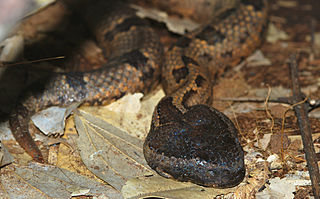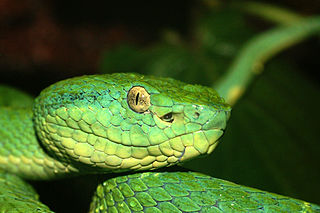
Open-pit, open-cast or open cut mining is a surface mining technique of extracting rock or minerals from the earth by their removal from an open pit or borrow.
A feature in archaeology and especially excavation is a collection of one or more contexts representing some human non-portable activity that generally has a vertical characteristic to it in relation to site stratigraphy. Examples of features are pits, walls, and ditches. General horizontal elements in the stratigraphic sequence, such as layers, dumps, or surfaces are not referred to as features. Examples of surfaces include yards, roads, and floors. Features are distinguished from artifacts in that they cannot be separated from their location without changing their form.

Bircotes is a mining town in the Bassetlaw district of Nottinghamshire, on the border with the metropolitan borough of Doncaster. It is located at 53°25′N1°3′W, and forms the civil parish of Harworth and Bircotes with its neighbour Harworth. The parish has a population of around 8,000 people falling to 7,948 at the 2011 Census. The nearest major towns are Doncaster and Worksop. The local school is Serlby Park Academy.

Caerphilly is a county borough in southern Wales, straddling the ancient county boundary between Glamorgan and Monmouthshire. It is governed by Caerphilly County Borough Council.

The scale insects are small insects of the order Hemiptera, suborder Sternorrhyncha. They comprise the superfamily Coccoidea, previously placed in the now obsolete group called "Homoptera". There are about 8,000 described species of scale insects.

The Pit River is a major river draining from northeastern California into the state's Central Valley. The Pit, the Klamath and the Columbia are the only three rivers in the U.S. that cross the Cascade Range.
In planetary nomenclature, a fossa is a long, narrow depression (trough) on the surface of an extraterrestrial body, such as a planet or moon. The term, which means "ditch" or "trench" in Latin, is not a geological term as such but a descriptor term used by the United States Geological Survey (USGS) and the International Astronomical Union (IAU) for topographic features whose geology or geomorphology is uncertain due to lack of data or knowledge of the exact processes that formed them. Fossae are believed to be the result of a number of geological processes, such as faulting or subsidence. Many fossae on Mars are probably graben.

The crocodile exoskeleton consists of the protective dermal and epidermal components of the integumentary system in animals of the order Crocodilia. It is a form of armour.

The olecranon from the Greekolene meaning elbow and kranon meaning head is the large, thick, curved bony eminence of the ulna, a long bone in the forearm that projects behind the elbow. It forms the most pointed portion of the elbow and is opposite to the cubital fossa or elbow pit. The olecranon serves as a lever for the extensor muscles that straighten the elbow joint.

Hypnale is a genus of venomous pit vipers endemic to Sri Lanka and southwestern India. Three monotypic species are currently recognized. All members have more or less upturned snouts that produce a hump-nosed effect.

Ovophis monticola is a venomous pitviper species found in Asia. Currently, two subspecies are recognized, including the nominate subspecies described here. Recent taxonomic work suggests that most of these should be considered as separate species. IUCN has already evaluated O. m. makazayazaya as Ovophis makazayazaya.

Trimeresurus gramineus, known as the bamboo pit viper, Indian green pit viper, or common green pit viper, is a venomous pit viper species found only in southern India. It is the type species for the genus Trimeresurus.

Trimeresurus purpureomaculatus is a venomous pit viper species native to India, Bangladesh and Southeast Asia. Common names include: mangrove pit viper, mangrove viper, and shore pit viper.

Gloydius halys is a venomous pitviper species found within a wide range that stretches across Asia, from Russia, east of the Urals, eastwards through China. Five subspecies are currently recognized, including the nominotypical form described here.

The Elysium quadrangle is one of a series of 30 quadrangle maps of Mars used by the United States Geological Survey (USGS) Astrogeology Research Program. The Elysium quadrangle is also referred to as MC-15.

The Phoenicis Lacus quadrangle is one of a series of 30 quadrangle maps of Mars used by the United States Geological Survey (USGS) Astrogeology Research Program. The Phoenicis Lacus quadrangle is also referred to as MC-17. Parts of Daedalia Planum, Sinai Planum, and Solis Planum are found in this quadrangle. Phoenicis Lacus is named after the phoenix which according to myth burns itself up every 500 years and then is reborn.

The Tractus Fossae are a set of troughs in the Tharsis quadrangle of Mars, located at 26° north latitude and 101.4° west longitude. They are 390 km (240 mi) long and are named after a classical albedo feature name. The term "fossae" is used to indicate large troughs when using geographical terminology related to Mars. Troughs, sometimes also called grabens, form when the crust is stretched until it breaks, which forms two breaks with a middle section moving down, leaving steep cliffs along the sides. Sometimes, a line of pits form as materials collapse into a void that forms from the stretching.
Asterolecaniidae is a family of scale insects commonly known as pit scales or asterolecaniids. They typically cause a depression in the host plant's tissues and often cause distortion of the shoots. They are found on a range of hosts but are especially common on oaks, bamboos and a number of ornamental plants. Members of this family occur in most regions of the world but are most abundant in the northern hemisphere. There are about 25 genera and 243 recorded species.

Sydenham Pit & Drainage Pumping Station 1 is a heritage-listed pumping station and stormwater drain at Garden Street, Marrickville, Inner West Council, Sydney, New South Wales, Australia. It was designed by the NSW Public Works Department, which built the project from 1935 to 1941. It is also known as Sydenham Stormwater Basin and Drainage Pumping Station (DPS1). The property is owned by Sydney Water. It was added to the New South Wales State Heritage Register on 15 November 2002.
















